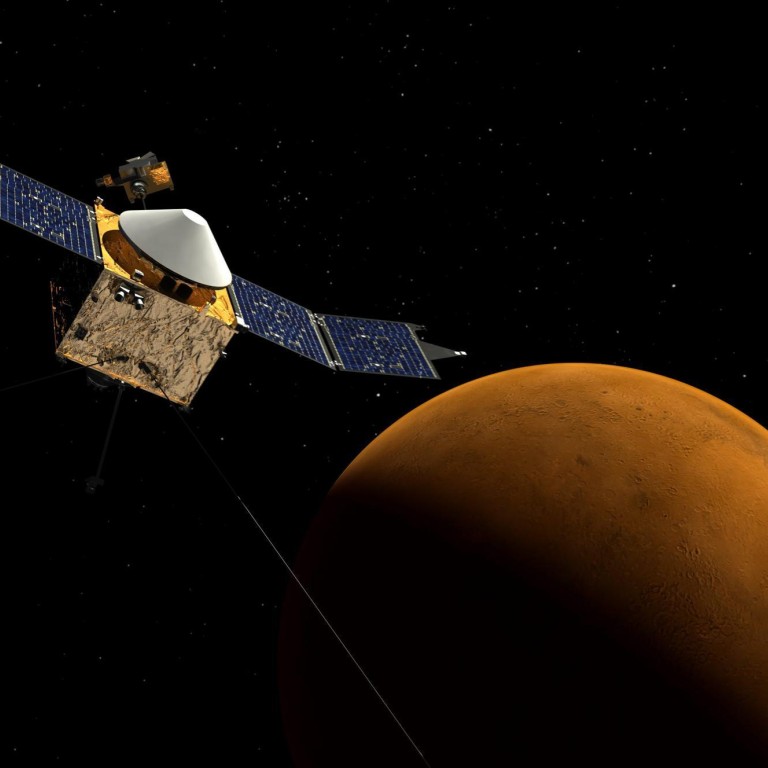
Update | Nasa's Maven spacecraft enters orbit around Mars
Maven probe will circle the red planet studying its upper atmosphere
A Nasa spacecraft has begun orbiting Mars on a mission to study how the planet's climate changed over time from warm and wet to cold and dry.
The US space agency's unmanned Mars Atmosphere and Volatile Evolution (Maven) orbiter travelled more than 10 months and 711 million kilometres to reach its destination for a first-of-its kind look at the red planet's upper atmosphere.
"Wow, what a night. You get one shot with Mars orbit insertion and Maven nailed it tonight," said project manager David Mitchell yesterday.
The data from the spacecraft aims to help scientists understand what happened to the water on Mars and the carbon dioxide in its atmosphere several billion years ago.
How Mars lost its atmosphere is one of science's biggest mysteries. The answers could shed light on the planet's potential to support life - even if that was just microbial life - long ago.
Maven's findings are also expected to help add to knowledge of how humans could survive on a future visit to the planet, perhaps as early as 2030.
"Mars is a cool place, but there is not much atmosphere," said John Clarke, of the Maven science team. "It is very cold, it is well below zero. The atmosphere is about half a per cent of what we are breathing. But we know that Mars could change and it was probably different in the past. There is a lot of evidence of flowing water on the surface from Mars's ancient history."
Next, Maven will enter a six-week phase for tests. It will then begin a one-year mission of studying the gases in Mars' upper atmosphere and how it interacts with the sun and solar wind.
"We are looking at early November as the official start of science," said Maven principal investigator Bruce Jakosky.
Much of Maven's year-long mission will be spent circling the planet 5,970km above the surface. However, it will execute five deep dips to a distance of just 125km above the Martian landscape to get readings of the atmosphere at various levels.
Nasa is the world's most successful space agency at sending rovers and probes to Mars, and past missions have included the Viking 1 and 2 in 1975 and the Mars Reconnaissance Orbiter in 2005.
The agency's latest robotic vehicle, Curiosity, is exploring Gale Crater and Mount Sharp, looking for interesting rocks and returning data on whether the Martian environment shows evidence of a past ability to support life.
Later this week, an Indian spacecraft, the Mars Orbiter Mission, is expected to reach Mars. The unmanned probe is set to enter Mars's orbit after 10 months in space, marking India's first mission to the red planet.
